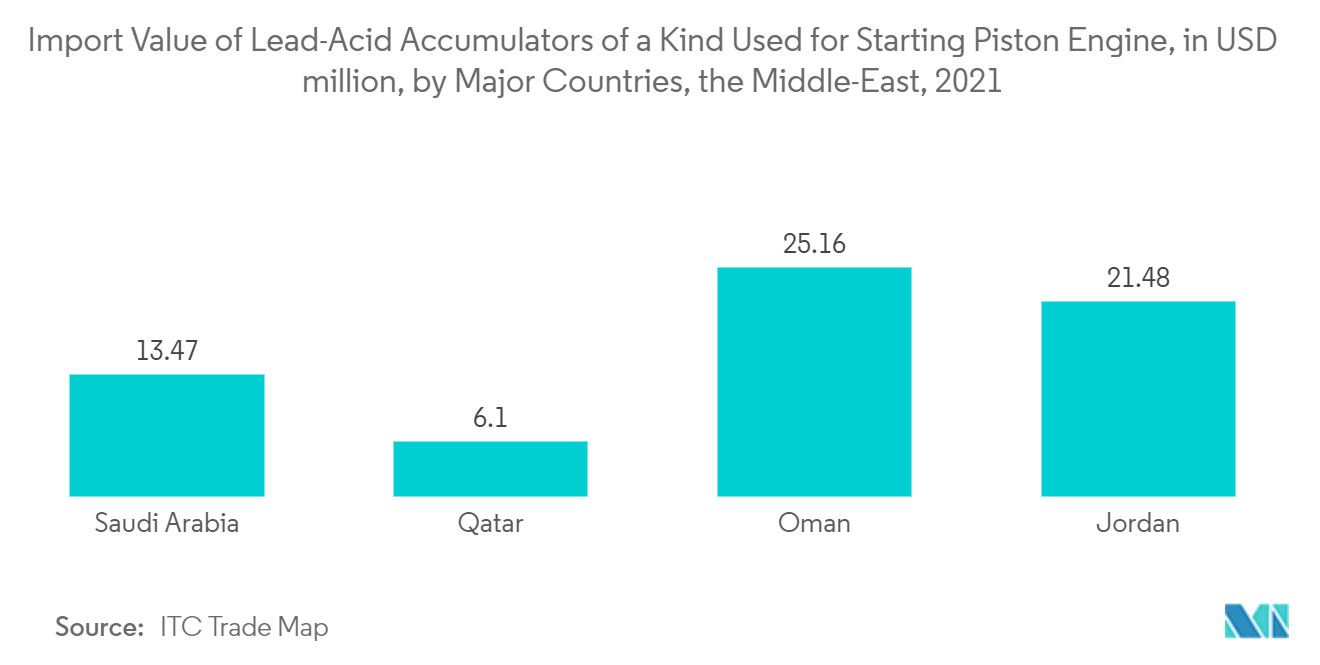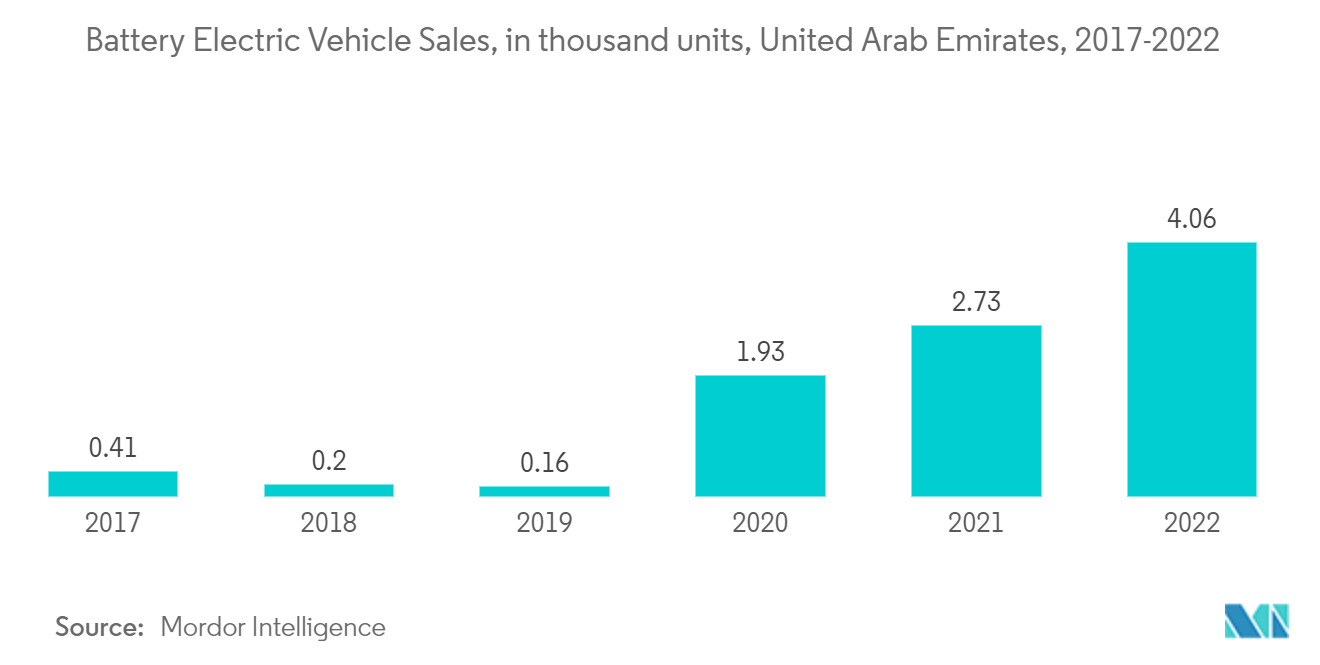Market Trends of Middle-East Battery Industry
Lead-acid Batteries to Dominate the Market
- The lead-acid batteries segment is expected to dominate the market in both developed and emerging economies in the Middle East region during the forecast period. The growth is expected to be mainly due to the low cost of lead-acid batteries, renewable targets, and the adoption of automated guided vehicles in industrial spaces.
- The energy-to-weight ratio of the lead-acid battery is low, but it can supply large surge currents, indicating a high power-to-weight ratio primarily useful for SLI (Starting Lighting Ignition) applications. Also, due to their low cost, lead-acid batteries are preferred when the price is more important than the energy-to-weight ratio. Some areas where lead-acid batteries can be used are backup supplies for mobile phone towers, hospitals, off-grid remote storage, etc.
- Lead-acid batteries in automotive applications contribute to more than half of the market. Automotive (excluding electric vehicles) batteries are mostly SLI batteries, and the lead-acid battery can also be used for applications like in-vehicle entertainment systems, power steering, power locking, power window systems, etc.
- As of 2022, the import value of lead-acid accumulators of the kind used for starting piston engines across the Middle East was about USD 538 million.
- Therefore, based on the abovementioned factors, the lead-acid battery segment is expected to maintain its growth momentum and dominate the Middle East region during the forecast period.

The United Arab Emirates to Dominate the Market Growth
- The United Arab Emirates is likely to lead the growth of the market over the next few years. This is because there is more demand for consumer electronics and more sales of cars, which are expected to increase the demand for both primary and secondary batteries.
- People in the United Arab Emirates, who are mostly young and from different backgrounds, are likely to buy a lot of consumer electronics, like smartphones and cars. For instance, the total shipments of mobile phones to the United Arab Emirates in the first quarter of 2022 were around 1.5 million units, worth about USD 494.6 million. In terms of share, smartphones accounted for 90.7% of the total number of shipments, compared to 9.3% for traditional phones. In the United Arab Emirates, the demand for prismatic and cylindrical battery cells is likely to rise as more and more people buy consumer electronics.
- Due to the growing population, the construction and building industry is also one of the fastest-growing industries. Infrastructure development projects in line with Expo 2020 (such as the Abu Dhabi Metro and Etihad Rail Network), booming industrialization, and construction activities are expected to be on the higher side in the country, which in turn is expected to supplement the demand for batteries for activities such as backup, lighting, and power tools, which is likely to propel demand for pouch batteries (used in cordless power tools such as drilling tools) and the cylindrical battery cell market in the near future.
- In March 2022, M Glory Holding Group put money into making the United Arab Emirates a better place to make EVs. The total investment in the plant is around USD 410 million. The plant's capacity would be around 55,000 EVs a year, expected to be the highest in the Middle East region. Furthermore, the company also introduced its first electric car, the Al Damani DMV300, to the market. resulting in more demand for the prismatic as well as cylindrical battery cell in the automobile sector.
- The United Arab Emirates has a better charging infrastructure, with Dubai having around 530 charging stations and around 120 spread across the country as of 2021. Major EV manufacturers are launching their new models of EV in the United Arab Emirates. Some of these are the BMW i8, Mercedes-Benz GLC 350e, Renault Zoe, and Chevrolet Bolt.
- Therefore, based on the abovementioned factors, the United Arab Emirates is expected to dominate Middle-East battery market growth during the forecast period.



